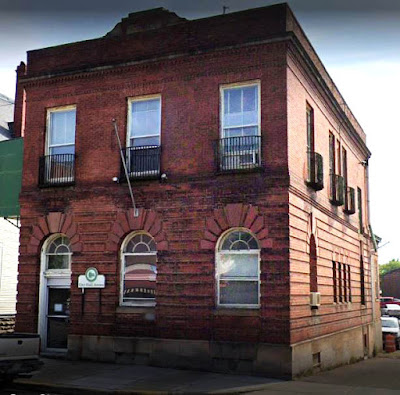Marietta Intelligencer, November 23, 1843
Commenced its session in this place on the 13th inst. Present, a full bench, viz: Hon. John E. Hanna, President Judge; Hon. John Cotton, Associate Judge; Hon. O. R. Loring, Associate Judge, Hon. Ebenezer Gates, Associate Judge.
The time of the court was almost exclusively occupied in the trial of criminals. Not a single case upon the civil docket was given to the jury. The following trials were had:
State of Ohio vs. Peter Noyes. Indictment for uttering and publishing counterfeit bank notes. Plea, not guilty. Parish & Buell, counsel for prisoner; Barber, Prosecuting Attorney; and A. S. Nye, for the State. This case was submitted to the jury without argument. Verdict, guilty. Sentence, ten years imprisonment in the Penitentiary.
State vs. William Hughes. Indictment for rape upon the body of Mrs. Elizabeth Figgins, in Adams township, in July last. [Betsey Perry married Thomas Figgins, Washington County, Ohio, March 2, 1832.] Plea, not guilty. Verdict, guilty. Sentence, twelve years in Penitentiary. Barber & Goddard for State; Parish & Buell for prisoner.
State vs. Aaron Carle, George Carle, and Joseph Carle. Indictment for aiding, abetting, and procuring the commission of rape by William Hughes. Plea, not guilty. Verdict, as to Aaron Carle, guilty. Sentence, three years in Penitentiary. George and Joseph Carle, not guilty. Counsel same as in case of Hughes.
State vs. Aaron Carle, George Carle, and Joseph Carle. Indictment against Aaron Carle for rape, and against George Carle and Joseph Carle for aiding and abetting in the commission of said rape. Plea, not guilty. Verdict, guilty. Sentence for Aaron Carle, twelve years in Penitentiary; George and Joseph (sons of Aaron), each three years. Counsel, same as in the case of Hughes.
State vs. George Wilson. Indictment for rape upon Sarah Perry in Adams township in December 1840. Plea, not guilty. After the examination of numerous witnesses, this case was submitted to the jury without argument. Verdict, guilty. Sentence, fifteen years i Penitentiary. Barber & A. S. Nye for State; Parish, Buell and Tompkins for prisoner.
The five prisoners first named were all residents of Morgan County. The one last named was originally from Morgan, but lived in this county at the time the offence was committed, escaped from the officer soon after his examination before the magistrate, and has since lived in Meigs County, until about three months ago, when on a visit to his friends in Morgan County, he was arrested by the officers of this county, and has since been confined in jail here. Not one of them was properly a citizen of Washington County. It will be noticed that the aggregate time for which these prisoners were sentenced is fifty-eight years.


